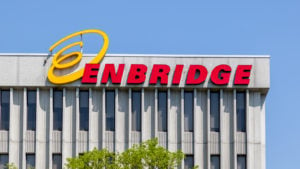An excellent strategy to garner a steady and stable stream of revenue over a prolonged period of time is to invest in equities that pay dividends. Of course, focusing on high-yield dividend stocks can amplify an investor’s given return, off the bat. By reinvesting the dividends received, investors can further leverage the power of compounding interest, substantially boosting their overall returns.
Of course, this entire strategy involves risk at different stages. The higher the dividend yield, the riskier the investment. That’s generally true in equities, as it is in other asset classes.
That said, certain industries tend to provide higher yields than others. Additionally, certain companies have maintained high payouts (and even continued to raise their distributions) in the face of what appears to be the market telling investors these dividends are unsustainable.
It’s difficult to pinpoint all the companies that may fit into these categories. However, among the high-yield dividend stocks I think investors ought to consider, these three stand out as potential long-term winners.
Let’s dive in.
Enbridge (ENB)

Enbridge (NYSE:ENB) is a Canadian energy infrastructure giant. Best-known for its network of pipelines spread across North America, Enbridge is a key contributor to the energy security of the entire continent.
This company is certainly among the high-yielding dividend stocks I think is worth a look, in part due to its whopping 7.1% dividend yield. For a company that obtains most of its income from fixed contracts spread over many years, that’s a yield that appears to be sustainable, and is expected to continue rising at around 3% a year for the next five years or so.
Investors on Wall Street will eagerly anticipate positive news from Enbridge, as the company approaches its upcoming earnings report. That’s because experts in the sector predict that Enbridge will announce profits of 63 cents per share, reflecting a decline of 4.55% from the prior season.
I think if Enbridge beats earnings by a wide margin, this is a stock with plenty of room to run. However, for those simply seeking to clip the company’s coupon, its 7.1% yield should be good enough.
Realty Income Corporation (O)

California-based Realty Income (NYSE:O) is one of the top real estate investment trusts on my radar. This trust focuses on investing in detached office buildings in the U.K., Spain, and the U.S. Thus, for those looking for high-yield stocks in the real estate sector, Realty Income remains a top options to consider.
This REIT’s price has seen a decline of around 7% since the start of the fiscal year, due primarily to underperformance with respect to its results compared to where analysts expected Realty Income to come in at. That said, this high dividend payer, with a yield of more than 5% at the time of writing, is a behemoth in the real estate sector.
The company’s detached office buildings have notably been hit hard of late. Thus, much of the trust’s higher dividend yield can be attributed to both net operating income growth and share price stagnation in recent years. There was that thing called the pandemic, remember?
That said, this REIT’s stats are impressive, and are worth noting. Realty Income provides investors with an increased distribution of 25.5 cents per share, previously 25.45 cents per share. Shareholders of record as of Apr. 3 will receive this distribution on Apr. 14. Accordingly, this dividend will make the 120th time Realty Income has increased its distribution since being publicly-listed in 1994. Indeed, if there’s any testament to the willingness of a management team to continue to provide outsized value to shareholders, this is it.
Additionally, it’s important to point out that Realty Income is one of the few options for investors seeking monthly dividends in this market. The fact that O stock trades at a price to discounted cash flow multiple of only 1.1-times is as intriguing as they come in this space.
Restaurant Brands (QSR)

Restaurant Brands (NYSE:QSR) is among the most defensive high-yield dividend stocks I think is worth considering. With a yield of “only” 3.4%, QSR stock doesn’t provide the up-front yield the other two companies on this list provide. However, what Restaurant Brands gives up in yield, it makes up for in defensiveness.
A leading purveyor of fast food franchises, Restaurant Brands is among the leaders in terms of its quick service restaurant operations. With banners such as Burger King, Tim Hortons, and Popeyes Louisiana Kitchen, investors have some of the best world-class brands to choose from in this holding company.
Notably, the financial performance of Restaurant Brands provides a compelling investment thesis for this stock on its own. The company’s Q4 results were impressive, with Restaurant Brands bringing in overall growth of 12% in system-wide sales. The rapidly-increasing trend in digital sales, particularly for Burger King (which rose almost 30% year-over-year), played a crucial role in this growth. Additionally, Tim Hortons experienced double-digit growth, while the substantial expansion of Popeyes into international markets contributed to its robust performance.
Over time, I expect Restaurant Brands to be able to continue to hike its dividend, as its cash flow continues to growth. International expansion opportunities outside of North America provide excellent potential for growth over the long-term.
On the date of publication, Chris MacDonald has a position in QSR, ENB. The opinions expressed in this article are those of the writer, subject to the InvestorPlace.com Publishing Guidelines.
